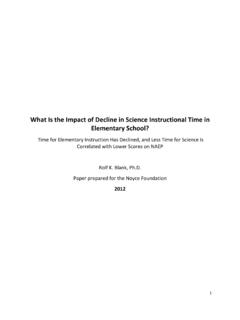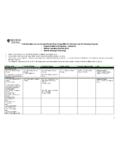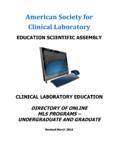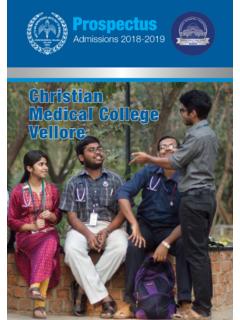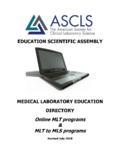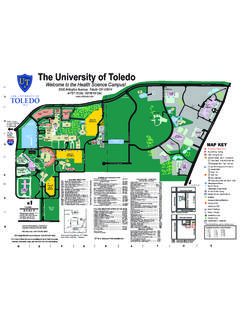Transcription of Science and Safety: It’s Elementary! - csss-science.org
1 Science and Safety: It s Elementary! CalendarScience and Safety: It s Elementary! With the increasing emphasis on hands-on, minds-on inquiry instruction at all levels in the National Science Education Standards (NSES) and most state frameworks or courses of study, it becomes more incumbent upon elementary teachers who teach Science to be as knowledgeable as possible about laboratory safety issues and their own responsibilities. As teacher and role model, you are expected to display good safety habits at all times and to set appropriate safety expectations for your students. Unfortunately, when you increase the amount of inquiry instruction in your classroom, you also increase the likelihood of accident. This document is intended to educate and reassure you, the user, that liability concerns can be minimized when you are knowledgeable of your duties and take appropriate precautions and preventative actions to avoid or minimize foreseeable hazards and to Some of Your Most Pressing Questions As Science supervisors/specialists, members of the Council of State Science Supervisors (CSSS) constantly receive questions from teachers and administrators about safety issues, responsibilities, and liability.
2 To address some of these concerns, we have prepared this document a companion to the secondary-level document, Science and Safety: Making the Connection to answer 10 of the questions asked most often by elementary teachers. The goal is to provide a handy, concise reference with information and a variety of resources in paper, electronic, and Internet accessible forms. It should be clear that this document cannot be comprehensive because of limitations of the format and purpose. Rather, we hope that it incorporates the most important information needed about the topics asked. The inclusion or omission of resources in this document should not be read as either endorsement or critique of those resources. Where to Go for More InformationFor more information about specific questions in the document as it pertains to a particular locale or state, contact your local or state fire marshal, building commission, health department/poison control center, environmental regulatory and state OSHA agencies, or Science specialist at your local or state board of education/education agency.
3 You should also cultivate a working partnership with the most knowledgeable high school Science teachers in your district and participate in safety training programs offered by your state Science teachers organization or state/local education agency. About UsThe Council of State Science Supervisors (CSSS), an organization of state Science supervisors/specialists throughout the United States, has a long history of working with other Science education organizations and professional groups to improve Science education. For more information about CSSS and a printable version of this document, go to of the CSSS Safety Committee that developed this document are:Bob Davis, Retired Secondary Science Specialist, Alabama Department of Education (Chair)James Firebaugh, State Science Specialist, Virginia Department of EducationDiana Harding, Retired Associate in Science Education, New York State Education DepartmentKathleen Lundgren, Retired State Science /EE Specialist, Minnesota Department of Children/FamiliesPeter Mecca, International System Specialist Science , Department of Defense Education ActivityLinda Schoen, Title I Science Specialist, South Carolina Department of EducationThe Chair of the CSSS Safety Committee wishes to thank Dr.
4 Jack Gerlovich, Drake University, Des Moines, Iowa, and Dr. Larry Funke (Chair) and members of the American Chemical Society s (ACS) Safety Committee Washington, , for their review of the draft of the document and valuable comments and suggestions. Thanks are also due to the Eisenhower National Clearinghouse (ENC), Eisenhower Network, Dupont Corporation, Intel Corporation, the National Aeronautics and Space Administration (NASA), and others who made the printing and distribution of this document to elementary schools and teachers across the country possible at no Note to the Elementary TeacherThe materials contained in this document have been compiled using sources believed to be reliable and to represent the best opinions on the subject. As stated above, the goal of this document is to provide a handy, concise reference that elementary teachers of Science , primarily at the K-5 level, can refer to for information and resources on some of the most commonly asked questions that concern teachers of Science .
5 The document as a whole does not purport to specify minimal legal standards. No warranty, guarantee, or representation is made by the Council of State Science Supervisors concerning the accuracy or sufficiency of the information contained herein, and the Council assumes no responsibility in connection therewith. The document is intended to provide basic guidelines for safe practices and facilities. Therefore, it cannot be assumed that ALL necessary warnings and precautionary measures are contained in this document and that other or additional information or measures may not be required. Users of this document should also consult pertinent local, state, and federal laws pertaining to their specific jurisdictions, as well as legal counsel, prior to initiating any safety program. Registered names and trademarks, etc., used in this publication, even without specific indication thereof, are not to be considered unprotected by ItemsThe following practices should be observed in your Science instructional environment.
6 1. Have and enforce a safety contract signed by students and parents. 2. Identify medical and allergy problems for each student to foresee potential hazards. 3. Assess and minimize barriers for students with disabilities. 4. Model, post, and enforce all safety procedures. Display safety posters and the numbers for local poison control centers and emergency agencies. 5. Know district and state policies concerning administering first aid and have an adequately stocked first-aid kit accessible at all times. 6. Report all injuries, including animal scratches, bites, and allergic reactions, immediately to appropriate personnel. 7. Be familiar with your school s fire regulations, evacuation plans, and the location and use of fire fighting equipment. 8. Post and discuss emergency escape and notification plans/emergency phone numbers in each space used for Science activity.
7 9. Make certain that the following items are easily accessible in elementary classrooms, classrooms with labs, and Science resource rooms: appropriate-size chemical splash goggles that are American National Standards Institute (ANSI) Z87 or coded and of type G, H, or K only non-allergenic gloves non-absorbent, chemical-resistant protective aprons eyewash units safety spray hoses/shower ABC tri-class fire extinguisher(s) flame retardant treated fire blanket 10. Make certain that you, your students, and all visitors are adequately protected when investigations involving glass (not recommended), heat, chemicals, projectiles, or dust-raising materials are conducted. 24. Make certain that students understand that chemicals must never be mixed just for fun or to see what might happen ; that they should never taste chemicals; and that they should always wash their hands after working with Precautions 25.
8 Make certain that students understand that they must NOT perform experiments with electrical current at home or at school just for fun or to see what will happen. Only supervised activities directed by the teacher should be done. 26. Make certain electrical cords are short and plugged into the nearest socket. Emphasize that students grasp the plug, rather than the cord, when unplugging electrical equipment. Cords also must be in good repair. Do not use extensions. 27. Be sure that students hands and surrounding surfaces are dry before plugging in electrical cords or turning on and off switches and appliances/tools. Water can be a good conductor of electricity. 28. Make sure all electrical outlets are Ground-Fault Interrupters (GFIs). Cover outlets when not in use. 29. Use only three-prong (grounded) plugs when small electrical tools such as heating elements for terraria and aquaria, hot plates, or small motors are used.
9 Extension cords should not be used. 30. Instruct students never to grasp any electrical device that has just been turned off, since it may be hot after use and result in serious burns. 31. Make certain that students understand that connecting only a wire between the terminals of a battery will result in the wire getting hot and possibly causing serious burns. 32. Remind students that even non-electrical hand tools such as hammers, screwdrivers, or hand drills slip easily and can produce projectiles or inflict serious cuts. Appropriate safety equipment should always be worn. 1. Where can I find a general Science safety checklist? 11. Implement a goggle sanitation plan for goggles used by multiple classes. 12. Keep spaces where Science activities are conducted uncluttered. 13. Limit size of student working groups to a number that can safely perform the activity without causing confusion and accidents.
10 14. Prepare records [including Material Safety Data Sheets (MSDS) (See question 5) on all chemicals used] on safety training and laboratory incidents. 15. Provide adequate workspace (45 square feet) per student as well as low table sections for wheelchair accessibility that can be supervised by recommended ratio of teacher to student of 1:24. 16. Do not permit eating and drinking in any space where Science investigations are conducted. 17. Do not store, under any circumstances, chemicals and biological specimens in the same refrigerator used for food and beverages. 18. Do not use mercury thermometers with elementary students, since their use is inappropriate. Any mercury thermometers still present should be disposed of Precautions 19. Substitute plasticware for glassware in elementary classrooms, classrooms with labs, and Science resource rooms. 20. Possess a whiskbroom, dust pan, and disposal container for broken glass when using glassware of any type (not recommended).
